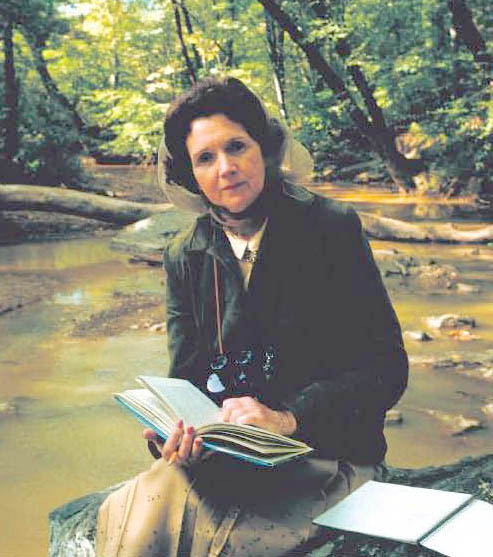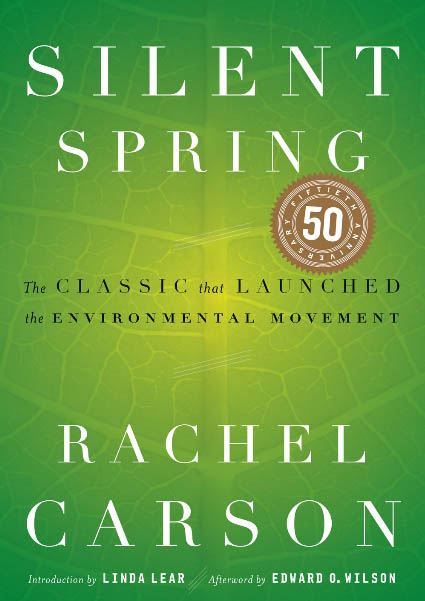 |
Home |
Catalogs |
Contact Us |

Books on:
Animal RightsBlack History
Clean Energy
Democracy
Eco Design
Eco History
Food and Nutrition
Genetic Engineering
Green Cities
Green Politics
Local Economics
Natural Building
Peace and Nonviolence
Simple Living
Trees and Forests
 Rachel Carson by Alfred Eisenstadt Rachel Carson by Alfred Eisenstadt |
Rachel Carson
"We stand now where two roads diverge. But unlike the roads in Robert Frost's familiar poem, they are not equally fair. The road we have long been traveling is deceptively easy, a smooth superhighway on which we progress with great speed, but at its end lies disaster. The other fork of the road—the one less traveled by—offers our last, our only chance to reach a destination that assures the preservation of the earth." Rachel Carson in the Introduction to Silent Spring
Rachel Carson was born in 1907. She grew up in Springdale, Pennsylvania on the Allegheny River sixteen miles from Pittsburgh. Her mother taught her a love of nature and the living world. Her devotion to the sea began as a small child when she discovered a fossilized shell on a rocky hillside near her family’s farm. Carson graduated from Pennsylvania College for Women (now Chatham College) in 1929, studied at the Woods Hole Marine Biological Laboratory, and received her MA in zoology from Johns Hopkins University in 1932.
Carson was hired by the U.S. Bureau of Fisheries to write radio scripts during the Depression and supplemented her income writing feature articles on natural history for the Baltimore Sun. She rose to become Editor-in-Chief of all publications for the U. S. Fish and Wildlife Service. In her free time she wrote. Under the Sea-wind was published in 1941. In 1952 she published her prize-winning study of the ocean, The Sea Around Us, which was followed by The Edge of the Sea in 1955. These books made Carson famous. She resigned from government service in 1952 to devote herself to her writing.
In 1962, Carson published Silent Spring. The book is widely credited with helping to launch the contemporary American environmental movement. The book documented detrimental effects of pesticides on the environment, particularly on birds. Carson accused the chemical industry of spreading disinformation, and public officials of accepting industry claims uncritically. She called for a change in the way humankind views the natural world. The book was widely read—especially after its selection by the Book-of-the-Month Club and the New York Times best-seller list—and inspired widespread public concerns with pesticides and pollution of the environment. Silent Spring facilitated the ban of the pesticide DDT in 1972 in the United States Congress.
Testifying before Congress in 1963, Carson called for new policies to protect human health and the environment. Rachel Carson died in 1964 after a long battle with breast cancer.
Silent Spring has been featured in many lists of the best nonfiction books of the twentieth century. In the Modern Library List of Best 20th-Century Nonfiction it was at No. 5. In 2006, Silent Spring was named one of the 25 greatest science books of all time by the editors of Discover Magazine. "Even if she had not inspired a generation of activists, Carson would prevail as one of the greatest nature writers in American letters." Peter Matthiessen for Time magazine's "100 Most Influential People of the Century."
The
Fracking of Rachel Carson, Silent Spring’s lost legacy, told in fifty parts
by Sandra Steingraber, Orion magazine, September/October 2012
Rachel Carson's books include:
Lost Woods: The Discovered Writing of Rachel Carson
Books about Rachel Carson include:
On a Farther Shore: The Life and Legacy of Rachel Carson, Author of Silent Spring
Rachel Carson: Witness for Nature
The
Gentle Subversive: Rachel Carson, Silent Spring, and the Rise of the Environmental Movement
Children's Books about Rachel Carson include:
Rachel Carson and Her Book That Changed the World
Rachel
Carson: Preserving a Sense of Wonder
Rachel: The Story of Rachel Carson
Reader Comments |

50th
Anniversary Year
